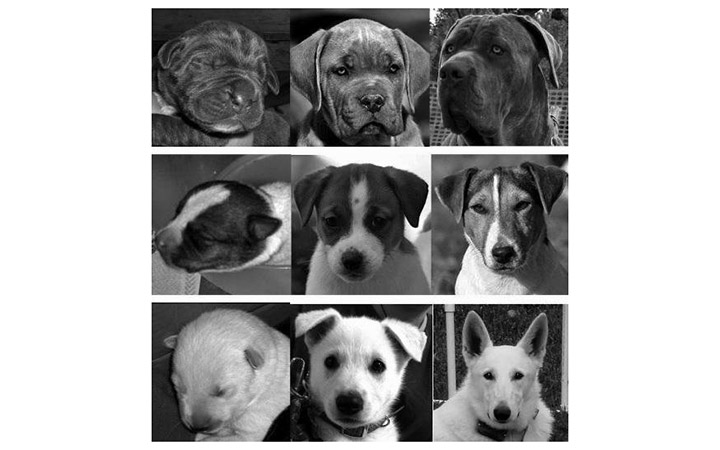Here's When Puppies Are Most Adorable, According to Science

There's no debating it: Puppies are adorable. But is there an age when they reach "peak" cuteness?
A new study may have an answer. The study, which aimed to determine the "optimal age" of puppy cuteness, found that puppies are most appealing to humans at around 6 to 8 weeks of age. That's around the time when puppies are weaned from their mothers, leading the researchers to hypothesize that puppies reach peak cuteness right when they need human care the most.
"Just as their mother is getting sick of them and is going to kick them out of the den and they're going to have to make their own way in life, at that age, that is exactly when they are most attractive to human beings," lead study author Clive Wynne, a professor of psychology and director of Arizona State University's Canine Science Collaboratory, said in a statement.
The new findings may help scientists better understand how dogs evolved to rely on human care, the researchers said.
"This attraction of humans to dog pups at that phase of life may have given early dogs, and may continue to give today's free-living dogs, a competitive advantage by being adopted and cared for by humans," the researchers wrote in the May 3 issue of the journal Anthrozoös. [Photos: World's Cutest Baby Wild Animals]
Cute and cutest
Dogs evolved from wolves, but the two types of canines have notable differences; for example, wolf puppies are reared by their parents for up to two years, while dog puppies are abandoned by their mothers after weaning, at around 6 to 11 weeks of age.
This early age of abandonment leads to a high mortality rate among puppies that are not in the care of humans; according to some estimates, more than 80 percent of puppies die in the first year of life without human care.
Get the world’s most fascinating discoveries delivered straight to your inbox.
Previous studies have found that humans consider animals to be cuter if they have "infantile features," such as large eyes, a round face and a small mouth. But these studies did not look at whether there might be an "optimal age" of adorableness.
In the new study, 51 (very lucky) student participants were put to work: They were shown photos of puppies at different ages, from birth to 7 months old, and were asked to rate the animals' cuteness. The photos included images of three breeds of dog: the Jack Russell terrier, the cane Corso, and the white shepherd.
The puppies' attractiveness ratings were lowest at birth, peaked before 10 weeks old and then declined before leveling off at an older age.
Cane corso puppies were deemed most adorable at 6.3 weeks; Jack Russell terriers were rated cutest at 7.7 weeks, and white shepherds were judged most cuddly at 8.3 weeks, the study found.
The researchers noted that they did not ask the participants about their familiarity with these three breeds, which could have affected the ratings.
In addition, the study included only still photos of puppies, and the participants might give different ratings if they were to watch a video of the puppies, where they could see the animals' patterns of movement, the researchers said. This could be a follow-up study, Wynne said.
He stressed that the findings don't mean people stop loving their dogs after 8 weeks. "The eight-week point is just the point where the hook is biggest, the ability of the animal to grab our interest is strongest. But, having grabbed our interest, we continue to love them all their lives," Wynne said.
Original article on Live Science.

Rachael is a Live Science contributor, and was a former channel editor and senior writer for Live Science between 2010 and 2022. She has a master's degree in journalism from New York University's Science, Health and Environmental Reporting Program. She also holds a B.S. in molecular biology and an M.S. in biology from the University of California, San Diego. Her work has appeared in Scienceline, The Washington Post and Scientific American.



